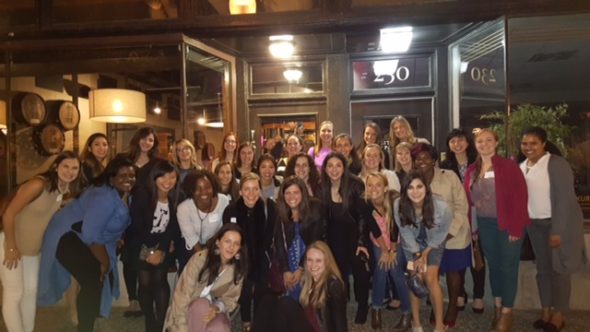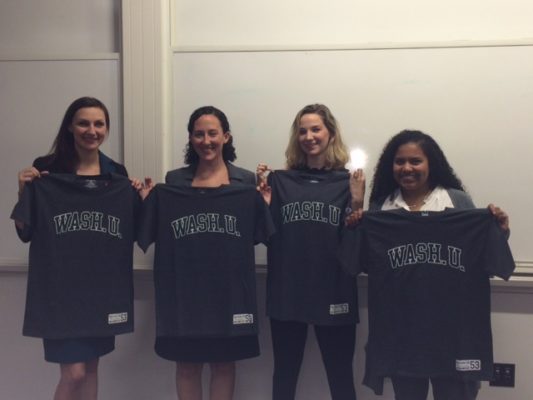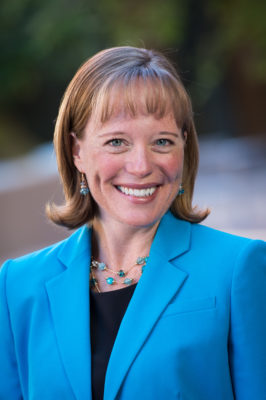This blog post was originally published on St. Louis Public Radio’s website. Listen to interview here.
St. Louis native Kielah Harbert remembers how nervous she felt when she hit submit and sent out her college applications.
“Everything was done and it was just a waiting game,” said Harbert, who will be the first in her family to graduate from college next year. “But when I sent it out I was confident that I would get in to a school that would be beneficial to my future. And so it wasn’t ‘OK I have to get into this school.’ It was ‘This is what I been waiting for. This is it.”
A graduate of St. Louis Public School’s Clyde C. Miller Career Academy, Harbert was enrolled in two programs designed to help low-income, first-generation students get into college. She now is a junior at Washington University working toward a degree in business and African-American studies.
Instead of being a barrier, Harbert discovered that coming from a family of modest means helped her pay for college — every school she applied to met her full financial need.
“My parents didn’t really know about the college application process or college in general, so it was harder for them to support me,” Harbert said. “They understood that it was something that I wanted to do. It was just more on me to make sure that it got done.”
To help other first generation students who may not have the help of college access programs like College Bound, last year Harbert co-wrote a how-to guide for getting into school, “#Admitted.”
While there are a lot of other college guides out there, Harbert said she and her co-author, Princeton student Wilglory Tanjong, wanted first-generation, low-income students to have a book written by people who had been where they are now.
“I think that because we offer this experience it’s easier for students to say, ‘Wow you know our situation may not be completely the same but it’s similar. And I can connect to you, and I see that you were able to accomplish this. I see myself in you. I think I can accomplish this as well.’ And we wanted students to know that they could do it,” Harbert said.
With college application deadlines approaching, Harbert had this advice for high school juniors and seniors:
Choose a college based on fit, not name
Harbert said if she were applying for college over again she would spend more time researching schools.
“I had an idea that I wanted to go to this, you know, one school or these couple of schools, and I don’t think I really expanded my horizons,” Harbert said. “I don’t think I spent enough time saying ‘Well, how does this school benefit me as a student?’”
Paying for college often requires more than good grades
“Early on I thought that getting good grades would be all I would need to do to get to college and get the money that I need,”Harbert said. She didn’t understand how a family’s income factors into financial aid.
College is worth the cost
“That’s a myth that we try to debunk (in #Admitted),” Harbert said. “It’s definitely worth the investment. And there are scholarships available. It’s not zero sum, all of this money is going to be debt.”
As for finding their way through college, Harbert said she’s still trying to find her own place at Washington University.
“I’m actually still navigating the entire process of being a first-generation student of color at a predominately white affluent institution,” Harbert said, adding that she’s found people on campus who really want to see her succeed, but general support for first generation students has been mixed.
According to a spokesperson for Washington University, about 7 percent of its 2016 freshman class is first generation.
Saint Louis University Assistant Provost Steve Sanchez said about 12 percent of students who enrolled at SLU in the fall are the first in their family to go to college.
Southern Illinois University-Edwardsville estimates that nearly 20 percent of its undergraduates are first generation, and the University of Missouri-St. Louis’ fall 2016 class, including transfer students, is about 42 percent first generation.
Image: Camille Phillips, St. Louis Public Radio








 Throughout the weekend’s programming, Diversity Weekends attendees were able to connect and ask questions to both current Olin MBAs, and some of our storied alumni. These interactions were a great way for the prospective students to learn about the Olin MBA experience directly from those who are currently living with it, and those who can speak to how Olin shaped their personal and professional lives with the benefit of retrospect.
Throughout the weekend’s programming, Diversity Weekends attendees were able to connect and ask questions to both current Olin MBAs, and some of our storied alumni. These interactions were a great way for the prospective students to learn about the Olin MBA experience directly from those who are currently living with it, and those who can speak to how Olin shaped their personal and professional lives with the benefit of retrospect.


